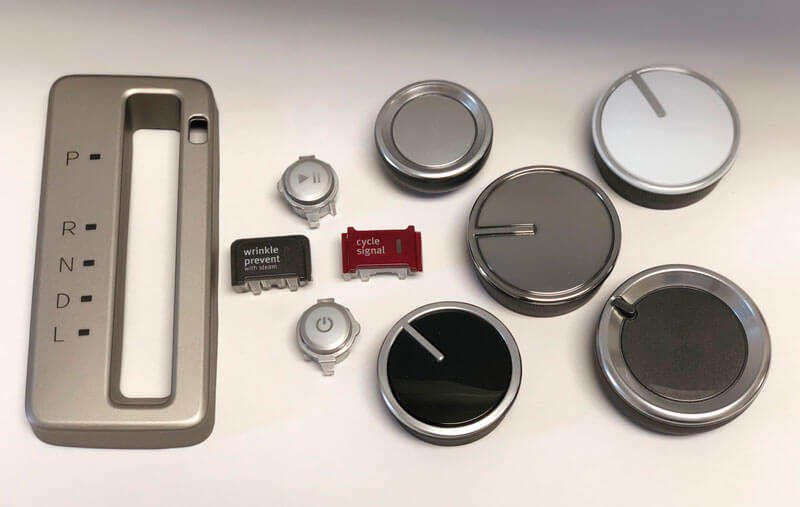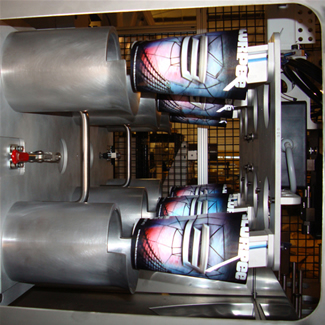Discovering Innovative Production with In-Mold Decorations
Grasping In-Mold Decorations: Techniques, Trends, and Best Practices for Optimum Results
In the world of production, the art of in-mold designs stands as a crucial facet of item design and production. In-Mold Decorations. By delving into the strategies, trends, and finest methods that underpin successful in-mold design processes, companies can unlock a realm of possibilities that not only elevate the aesthetic allure of their items yet additionally streamline manufacturing performance and strengthen customer interaction.
Product Choice
Material selection is an important element of grasping in-mold decorations, as it directly impacts the quality and sturdiness of the end product. When choosing materials for in-mold decors, it is important to consider variables such as compatibility with the molding procedure, the preferred aesthetic end result, and the ecological conditions the item will certainly deal with. Thermoplastic products like polycarbonate, polypropylene, and abdominal are commonly made use of for in-mold decors because of their adaptability and capability to achieve detailed layouts. These materials supply excellent moldability, allowing makers to develop complex forms and patterns with precision.
Furthermore, the picked material must have good bond residential properties to ensure that the decor adheres securely to the substratum throughout the molding process. Bond in between the design and the material is important for preventing delamination and making sure durable visual charm. In addition, products with high heat resistance are chosen for in-mold decors, especially for products that will certainly be revealed to raised temperatures during their lifecycle. By very carefully choosing the ideal product for in-mold decorations, producers can improve the total quality and sturdiness of their items, fulfilling the expectations of both end-users and clients.
Design Innovation
An important element in advancing the area of in-mold designs is the constant exploration and implementation of layout technology techniques. Design technology plays an important function in enhancing the visual allure, functionality, and overall quality of products made utilizing in-mold design processes. By including ingenious design components, makers can differentiate their items out there, draw in customers, and stay ahead of rivals.
One of the vital elements of design technology in in-mold designs is the assimilation of complex patterns, textures, and graphics that were formerly challenging to attain with conventional decor techniques. Advanced modern technologies such as 3D printing and electronic design devices enable designers to develop complicated and detailed layouts that can be effortlessly moved onto shaped parts. In addition, the usage of vivid colors, metallic surfaces, and unique impacts like gloss or matte textures can better raise the aesthetic charm of in-mold enhanced products.
In addition, design technology prolongs beyond aesthetic appeals to encompass practical improvements such as ergonomic shapes, incorporated features, and adjustable components that deal with certain customer needs. By accepting layout innovation, suppliers can unlock brand-new possibilities for item, customization, and creativity differentiation in the competitive landscape of in-mold designs.
Production Performance
Effective production procedures are crucial for converting the ingenious styles developed in the area of in-mold designs into high-quality ended up products that meet market needs and consumer assumptions. In the world of in-mold decorations, manufacturing performance includes various vital aspects that add to the general success of the manufacturing procedure.
Additionally, applying automation and robotics in the assembly line can considerably boost effectiveness by streamlining repeated jobs and reducing the margin of mistake. Automation not just accelerates the manufacturing process however additionally enhances accuracy and repeatability, leading to a much more top quality and consistent final product. Furthermore, embracing lean production principles, such as just-in-time stock management and waste reduction approaches, can additionally enhance production effectiveness by decreasing downtime and optimizing resource application. On the whole, an alternative method to manufacturing efficiency is critical in making best use of the potential of in-mold design methods and attaining optimum lead to the open market landscape.
Quality Assurance Actions
What are the vital techniques for ensuring rigid high quality control actions in the realm of in-mold decors? Quality control procedures are paramount in in-mold design processes to make sure the production of perfect and high-quality finished items.
Using advanced innovations such as computerized evaluation systems can additionally enhance the quality assurance procedure by offering trustworthy and accurate data for evaluation. These systems can discover flaws that may be missed out on by manual assessments, therefore improving general item top quality and consistency.

Regular training and advancement programs for staff members click to find out more associated with the in-mold design procedure can additionally add to preserving high-grade standards. By informing personnel on ideal practices, quality assumptions, and the relevance of attention to detail, firms can cultivate a society of quality consciousness throughout the company.
Consumer Appeal
To boost the marketability of in-mold decor products, providing and recognizing to consumer preferences play an important role in identifying their charm and success. Offering customization choices such as customized layouts, color variants, and textural aspects can significantly improve the appeal of in-mold design items.

Verdict
In-mold decors use a effective and flexible way to boost item aesthetic appeals. Grasping in-mold decorations calls for an alternative method that considers all facets of the production process to view publisher site make certain success.
In the realm of manufacturing, the art of in-mold decors stands as a pivotal facet of product style and production. Layout development plays an important role in boosting the aesthetic allure, performance, and total quality of items manufactured making use of in-mold design procedures.One of the crucial aspects of style innovation in in-mold decors is the integration of detailed patterns, structures, and graphics that were formerly challenging to attain with standard decor techniques.Efficient production procedures are necessary for translating the cutting-edge styles created in the field of in-mold decorations right into top notch finished items that satisfy market needs and customer assumptions. Using personalization options such as tailored styles, shade variations, and textural components can dramatically improve the allure of in-mold design products.